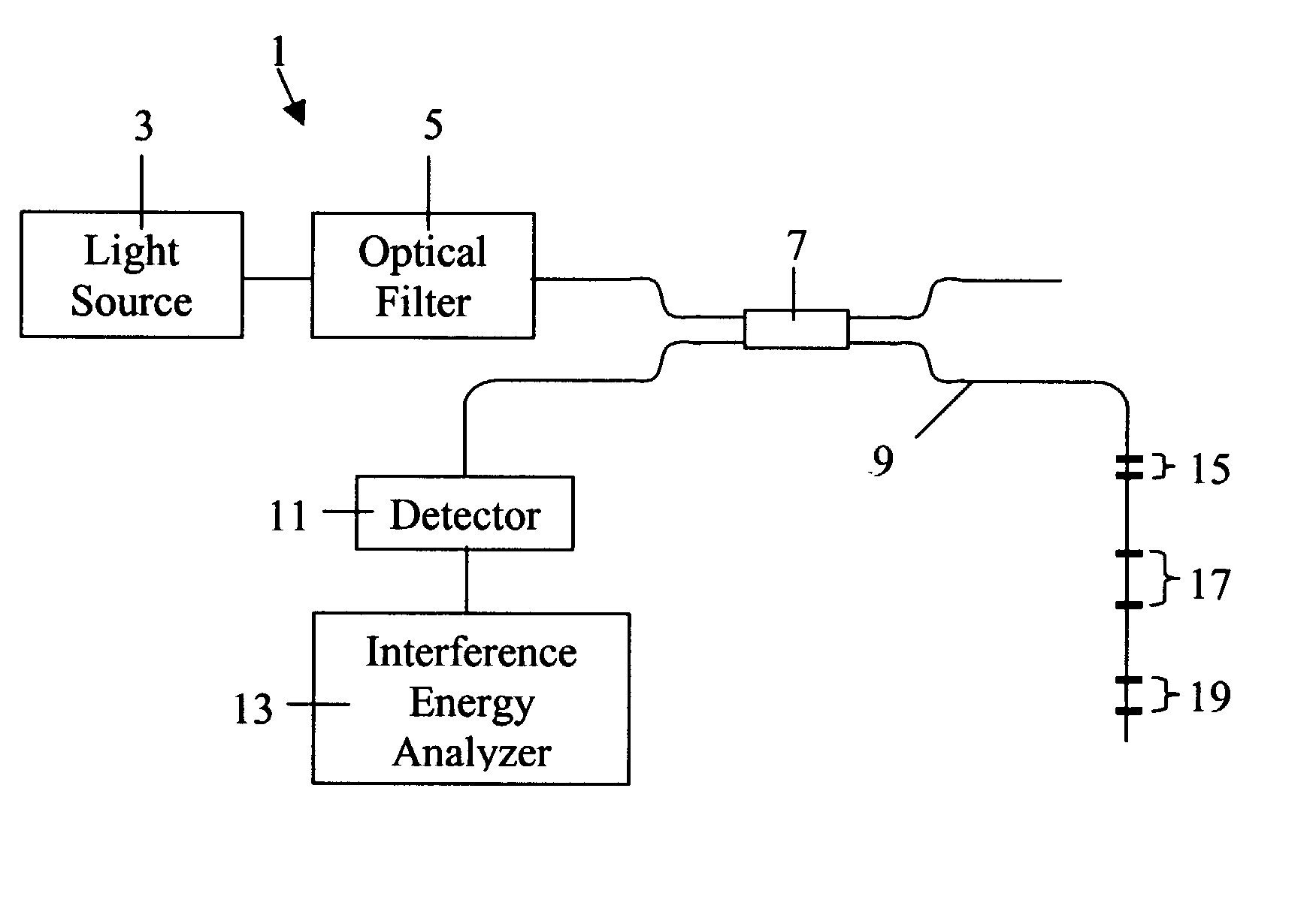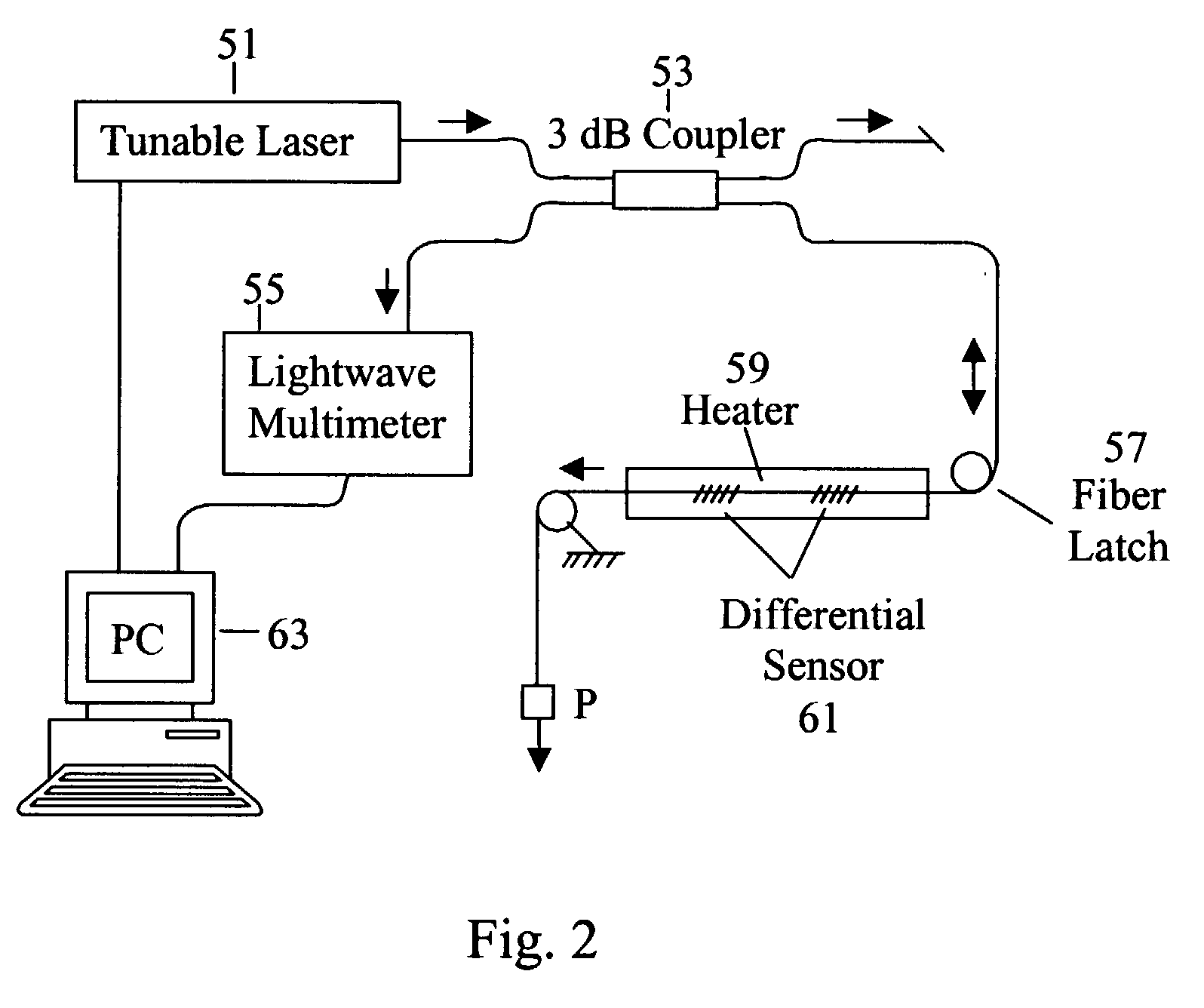Differential fiber optical sensor with interference energy analyzer
a technology of energy analyzer and fiber optical sensor, which is applied in the direction of optical elements, force measurement by measuring optical property variation, instruments, etc., can solve the problems of difficult multiplexing into a single fiber line, unreasonable wavelength separation, etc., and achieve the effect of reducing temperature sensitivity
- Summary
- Abstract
- Description
- Claims
- Application Information
AI Technical Summary
Benefits of technology
Problems solved by technology
Method used
Image
Examples
Embodiment Construction
[0024] Referring to FIG. 1, the present invention comprises a differential fiber optic sensor system 1. This system includes a broadband light source 3 that directs a broadband spectral profile through both an optical filter 5 and an optical coupler 7, and into a test fiber 9 that contains a number of double-Bragg grating elements 15, 17, and 19. The light source 3 is operable to generate a broadband light radiation with the spectral width that exceeds or equals to a measurement wavelength range. The optical filter 5 could be a commercially available fiber Fabry-Perot tunable filter with an electrically controlled air gap. The transmission of the optical filter is characterized by a central transmission wavelength .lambda., which changes inside a particular wavelength range, and the transmission spectral width .DELTA..lambda.. The transmission spectral width satisfy following expression: 1 <2 l max g, ( 1 )
[0025] where l.sup.g.sub.max is maximum distance between two gratings in a do...
PUM
 Login to View More
Login to View More Abstract
Description
Claims
Application Information
 Login to View More
Login to View More - R&D
- Intellectual Property
- Life Sciences
- Materials
- Tech Scout
- Unparalleled Data Quality
- Higher Quality Content
- 60% Fewer Hallucinations
Browse by: Latest US Patents, China's latest patents, Technical Efficacy Thesaurus, Application Domain, Technology Topic, Popular Technical Reports.
© 2025 PatSnap. All rights reserved.Legal|Privacy policy|Modern Slavery Act Transparency Statement|Sitemap|About US| Contact US: help@patsnap.com



